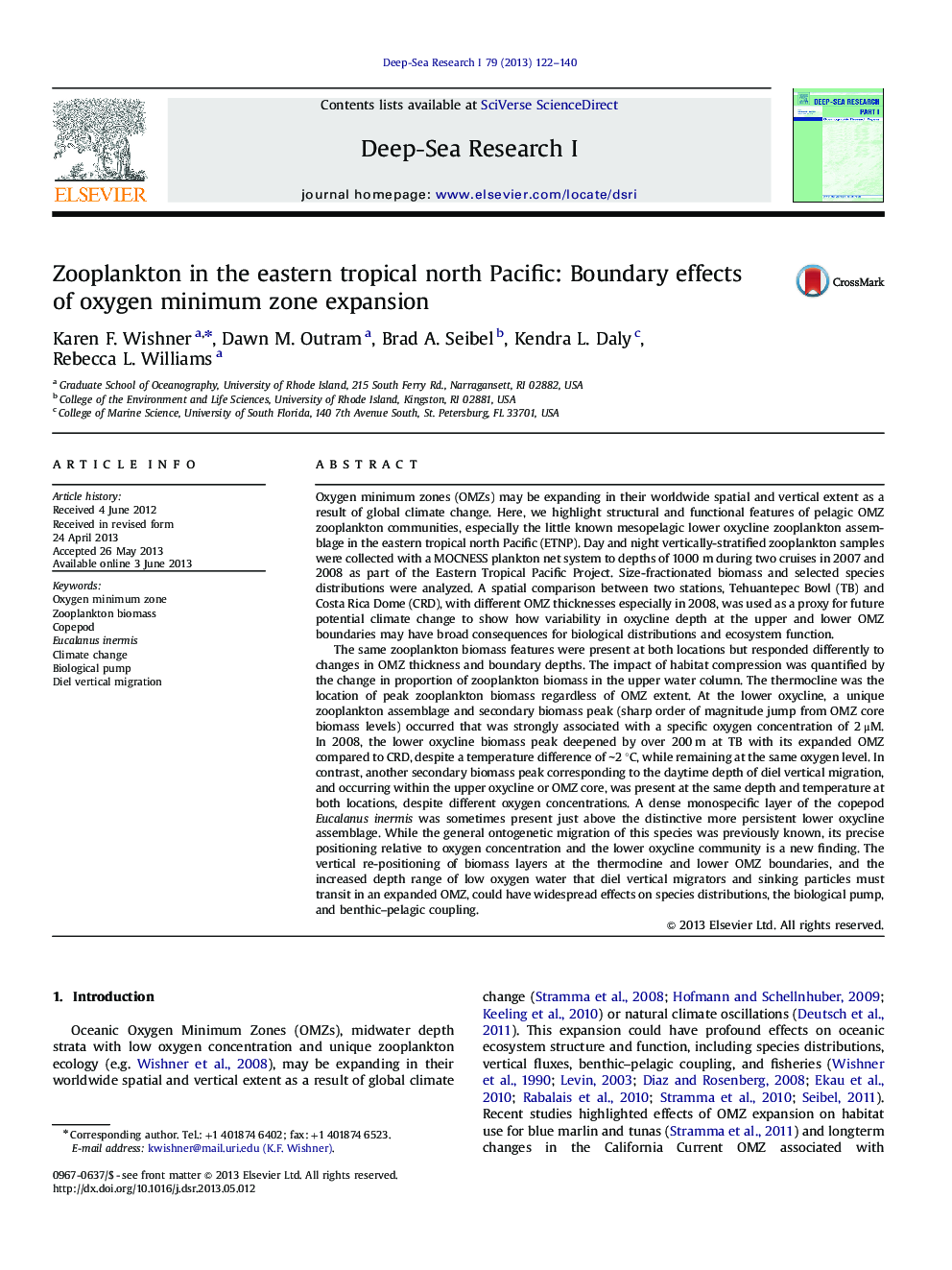| Article ID | Journal | Published Year | Pages | File Type |
|---|---|---|---|---|
| 6383755 | Deep Sea Research Part I: Oceanographic Research Papers | 2013 | 19 Pages |
Abstract
The same zooplankton biomass features were present at both locations but responded differently to changes in OMZ thickness and boundary depths. The impact of habitat compression was quantified by the change in proportion of zooplankton biomass in the upper water column. The thermocline was the location of peak zooplankton biomass regardless of OMZ extent. At the lower oxycline, a unique zooplankton assemblage and secondary biomass peak (sharp order of magnitude jump from OMZ core biomass levels) occurred that was strongly associated with a specific oxygen concentration of 2 μM. In 2008, the lower oxycline biomass peak deepened by over 200 m at TB with its expanded OMZ compared to CRD, despite a temperature difference of â¼2 °C, while remaining at the same oxygen level. In contrast, another secondary biomass peak corresponding to the daytime depth of diel vertical migration, and occurring within the upper oxycline or OMZ core, was present at the same depth and temperature at both locations, despite different oxygen concentrations. A dense monospecific layer of the copepod Eucalanus inermis was sometimes present just above the distinctive more persistent lower oxycline assemblage. While the general ontogenetic migration of this species was previously known, its precise positioning relative to oxygen concentration and the lower oxycline community is a new finding. The vertical re-positioning of biomass layers at the thermocline and lower OMZ boundaries, and the increased depth range of low oxygen water that diel vertical migrators and sinking particles must transit in an expanded OMZ, could have widespread effects on species distributions, the biological pump, and benthic-pelagic coupling.
Keywords
Related Topics
Physical Sciences and Engineering
Earth and Planetary Sciences
Geology
Authors
Karen F. Wishner, Dawn M. Outram, Brad A. Seibel, Kendra L. Daly, Rebecca L. Williams,
